Week4
Reflections and response to the content of Week 4 Tracing the Sun
-
Task 1: TRY OUT A GNOMON
This task allowed us to understand the direction and size of the shadows formed by the sun on objects at different times of the day at the latitude of Edinburgh (56°N)
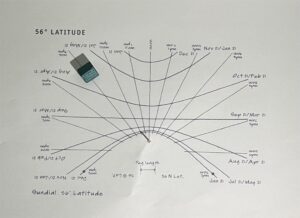
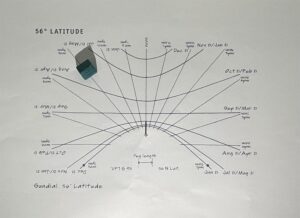
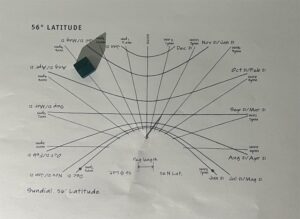
Fig.1 Fig.2 Fig.3
eg. The shaded position of this needle represents the direction and size of the sun’s shadow at 10am on the morning of July 21/May 21. (Fig. 1)
-
Task 2: FINDING THE LOCATION OF THE SUN
This task allowed us to calculate the position of the sun at different times of the month.
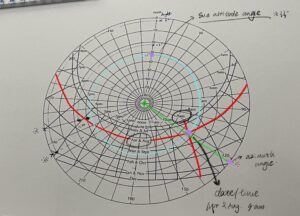
Fig.4
eg. This represents the sun’s altitude angle at 9am on Apr&Aug, which is approximately 33°, and its horizontal azimuth angle is approximately 122°.The position of the sun can be confirmed in 3D coordinates by the intersection of these two coordinates. (Fig. 4)
-
Task 3: TEST SUNLIGHT ENTERING INTO YOUR SPACE
Using task 2, we can confirm that the noon solar angle in June is approximately 62°, the noon solar angle in March is approximately 35° and the noon solar angle in December is approximately 15°.
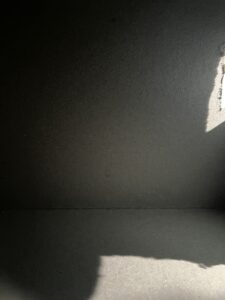

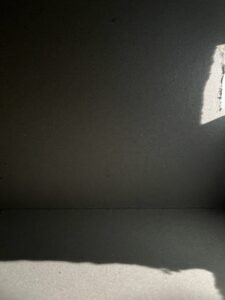
Fig.5 March Fig.6 June Fig.7 December
These experimental attempts have led to the following conclusions:
- December has the lowest sun height angle and the largest area of sunlight, allowing more sunlight to reach the floor of the room at midday.
- The least amount of sunlight enters the room in June.
- December has the most sunlight on the back wall.
- When the sun’s altitude angle is higher, the stronger the solar radiation and the more heat, so it is possible that the dazzle is stronger for people indoors in June.
-
Task 4: CREATE YOUR OWN SHADOW/SUNLIGHT TRACING
We used different color filters to create different sunlight environments.
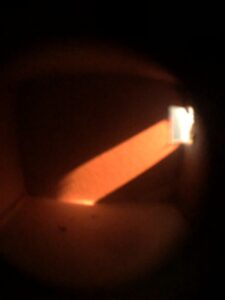
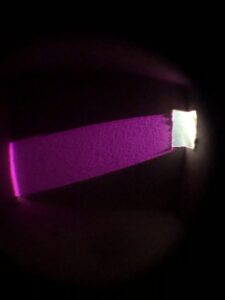
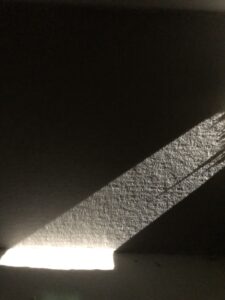
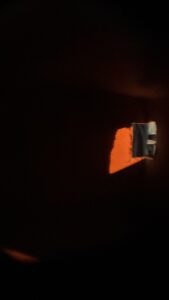
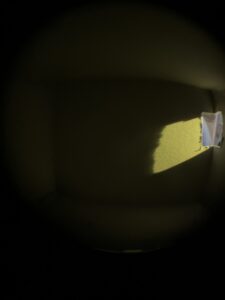
Fig.8 Fig.9 Fig.10 Fig.11 Fig.12
-
Task 5: CREATE YOUR OWN SHADOW/SUNLIGHT TRACING – ROOFLIGHT
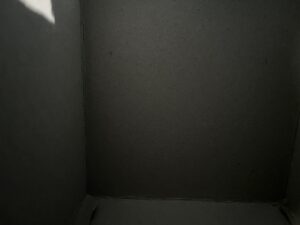
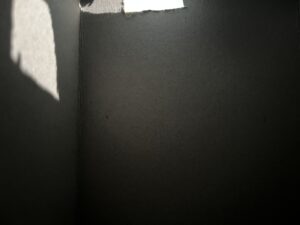
Fig.13 December
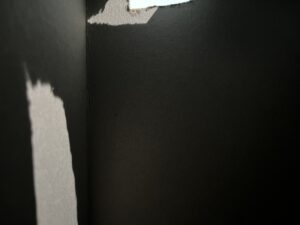
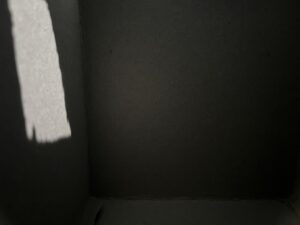
Fig.14 June
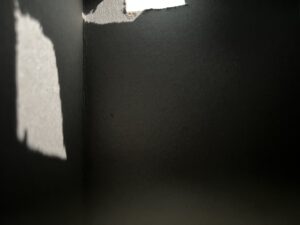
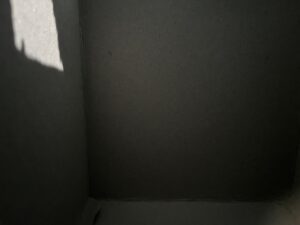
Fig.15 March
1. No sunlight reaches the floor in any of the three months tried so far, but extrapolating from the experiment, it should be the case that the greater the angle of sun height, the greater the chance of it reaching the floor.
2. The least amount of sunlight enters the room in December
3. The most sunlight in June hits the back wall of the room
4. June is the most harsh for people in the room
5. December has the lowest sun height angle of the three months tried so far, which maximises the direction of the ceiling, but still does not yet reach the bottom of the ceiling, probably because the skylights I have created are too small and too few in number, if I could open the skylights at multiple angles such as the four top corners it might allow more natural light into the space.




Recent comments